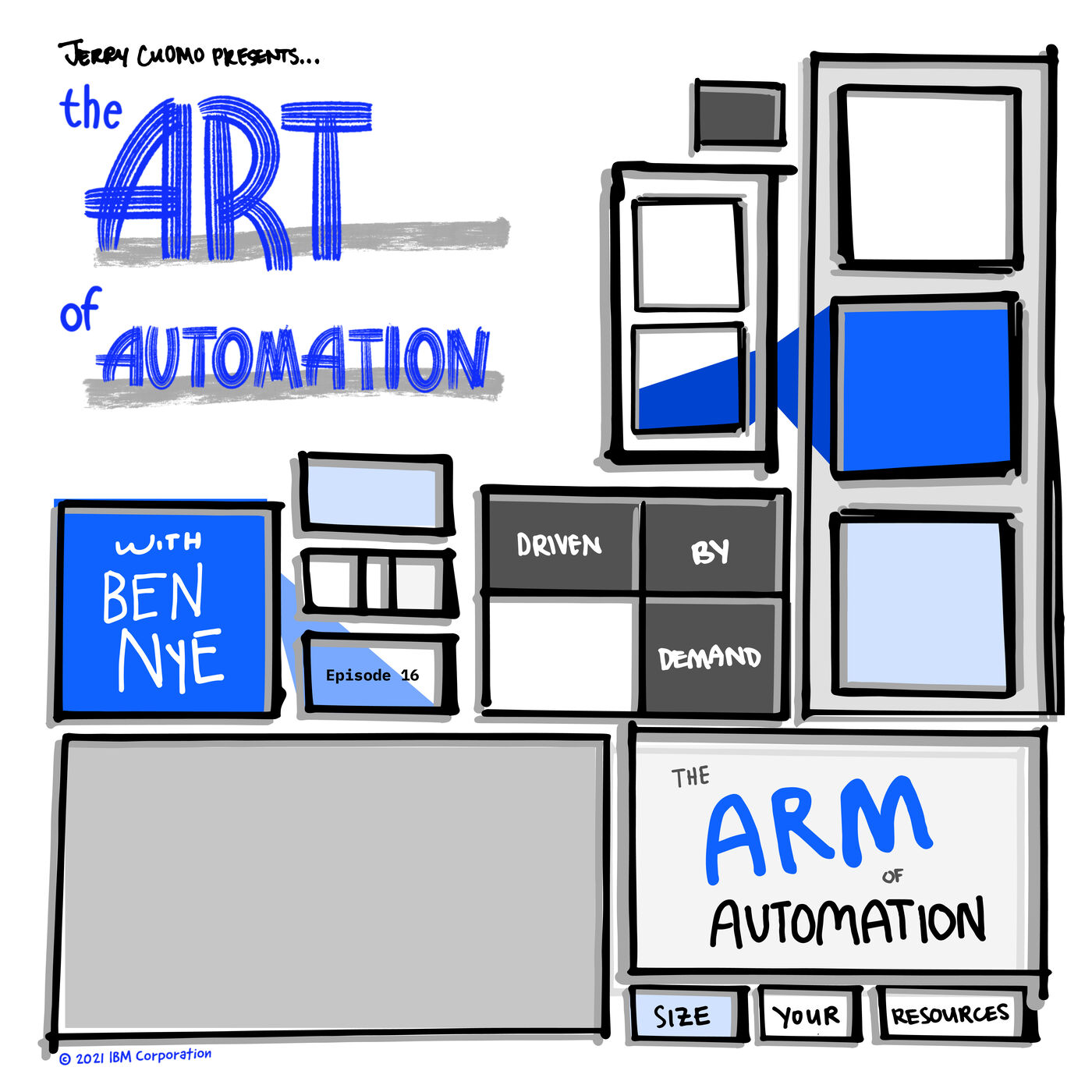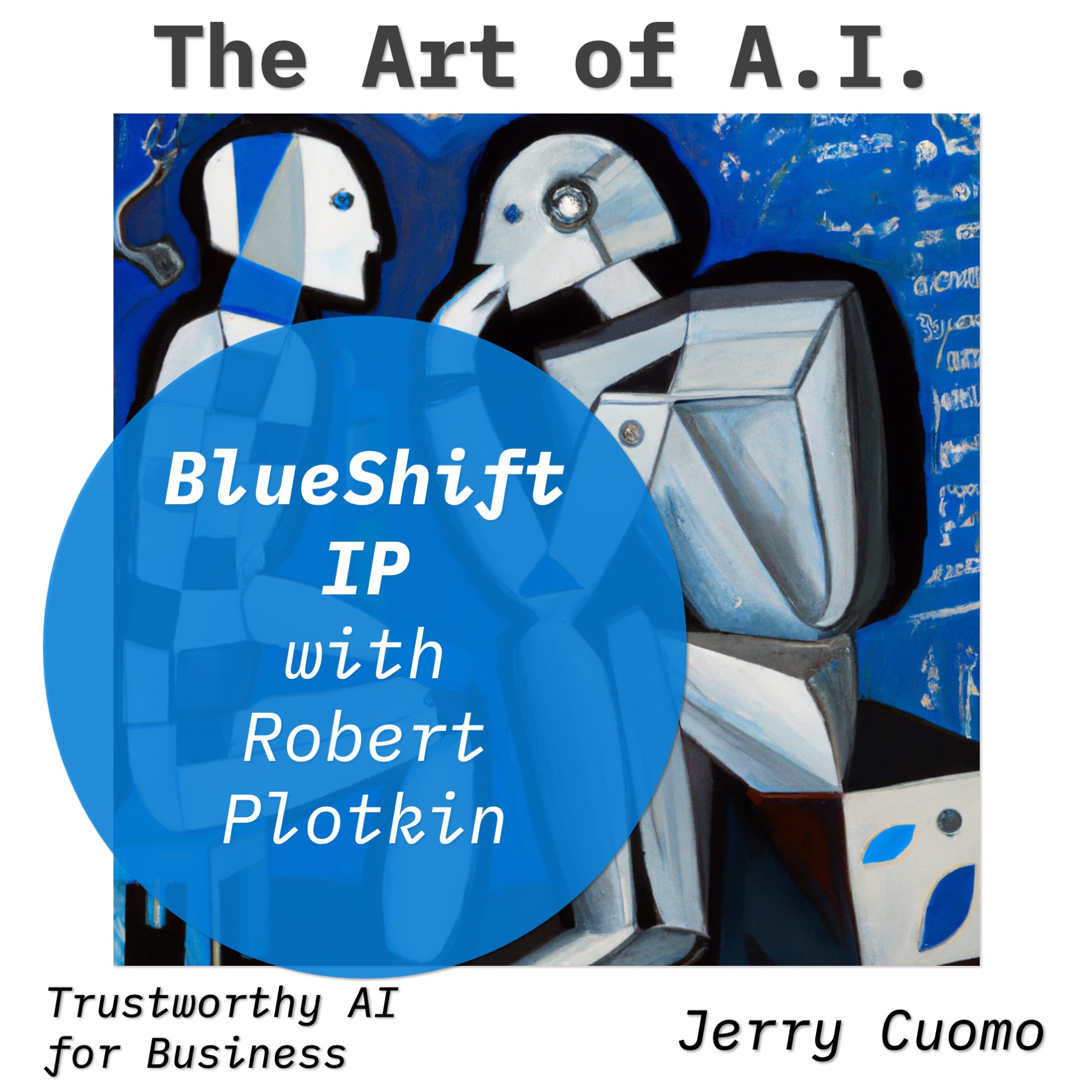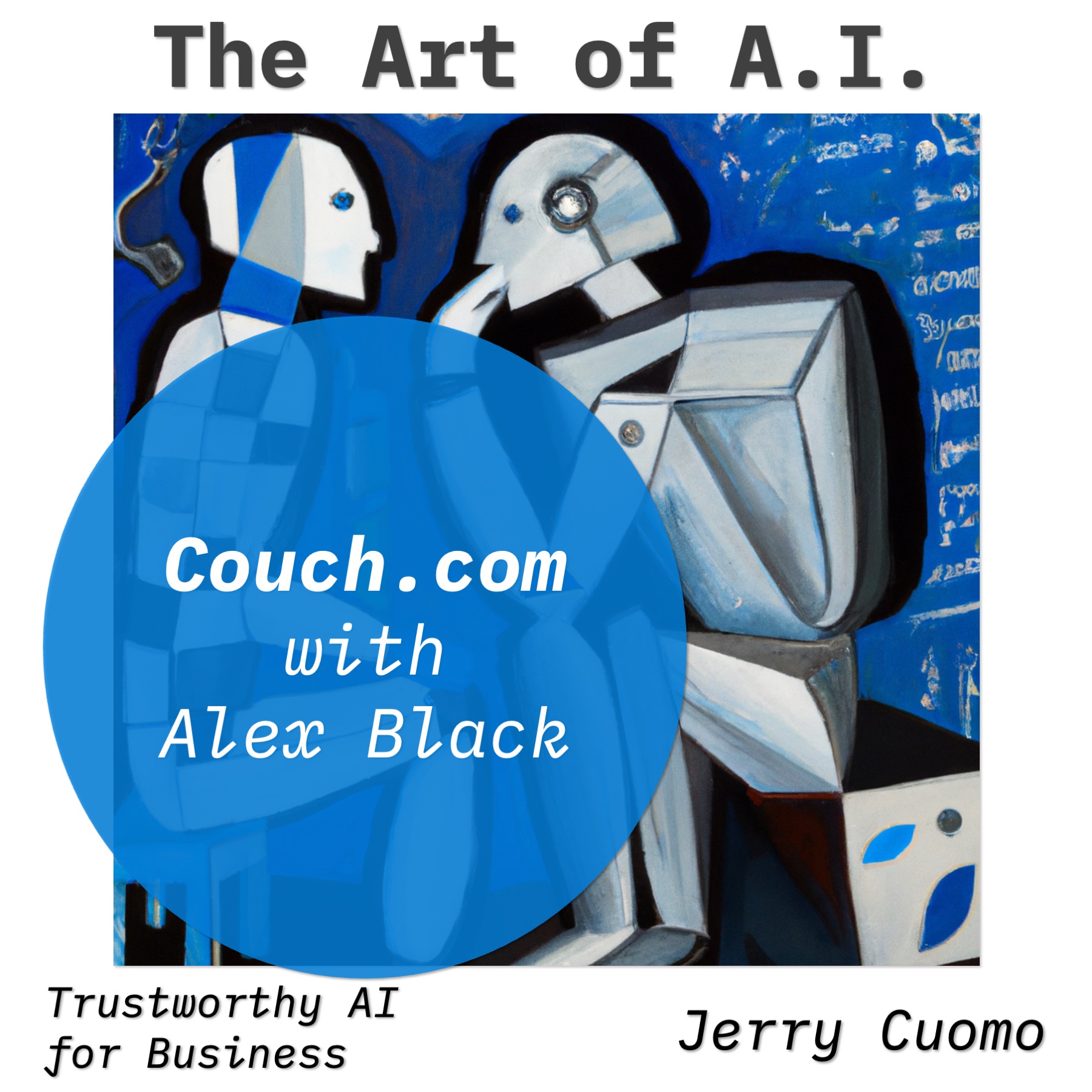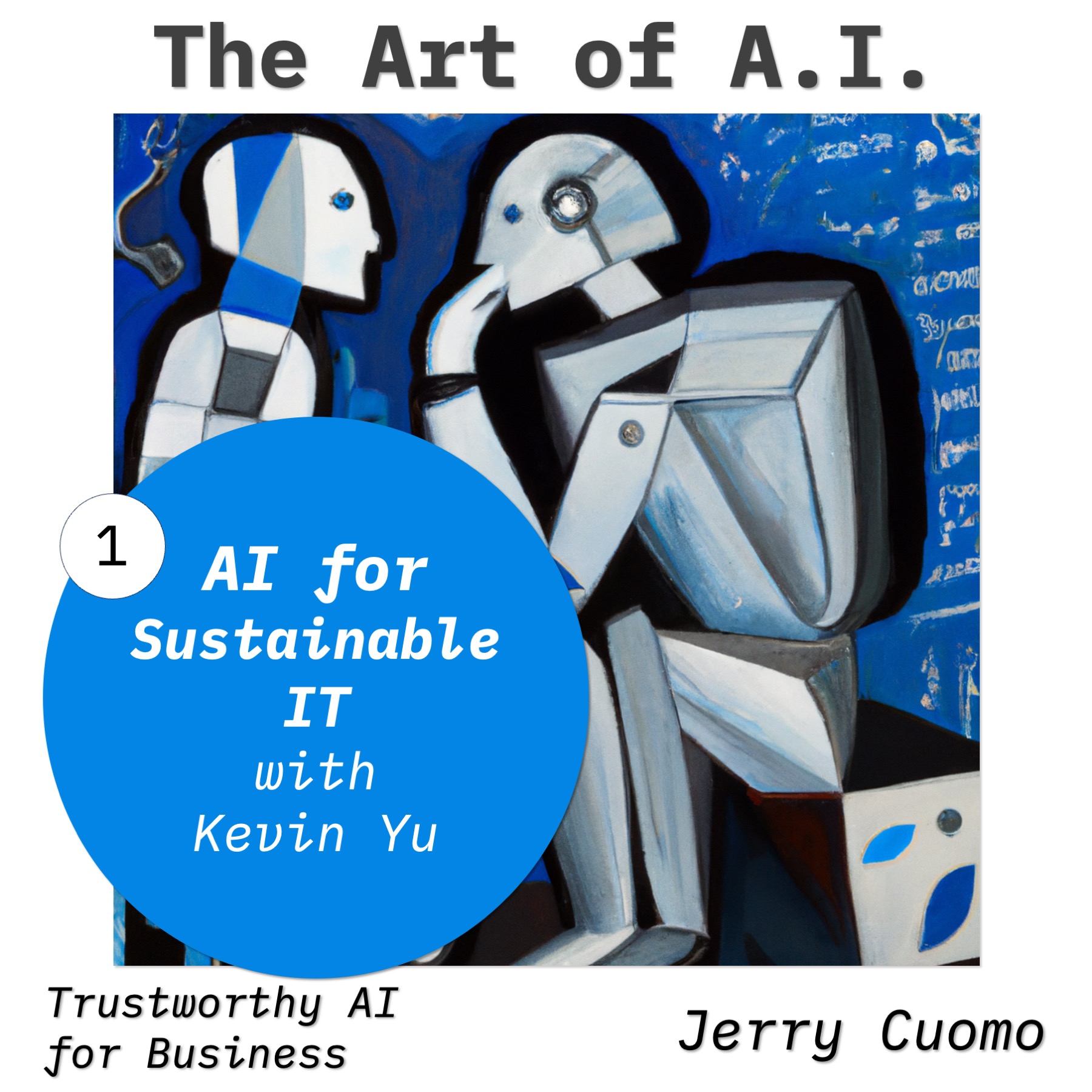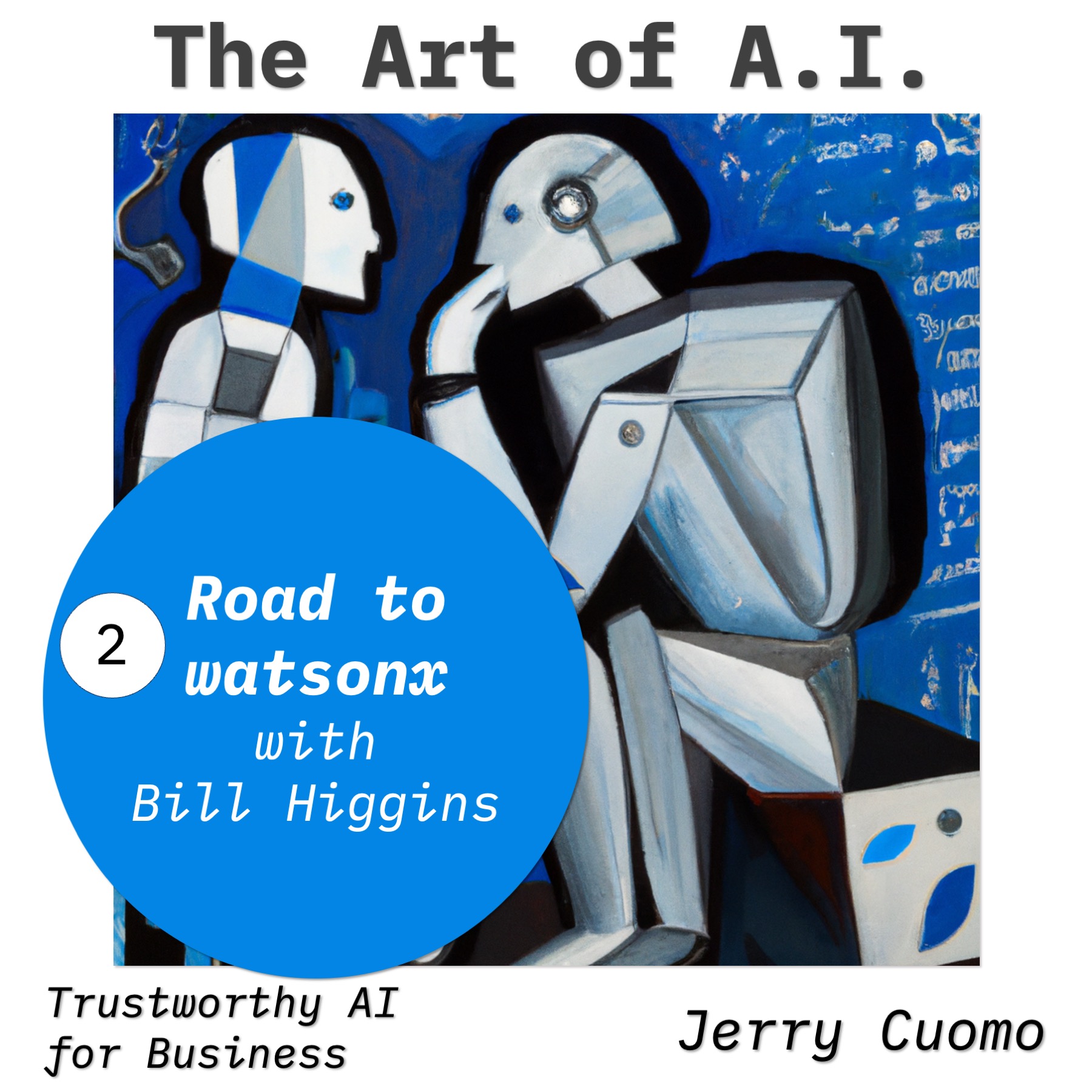The ARM of Automation with Ben Nye
- 0.5
- 1
- 1.25
- 1.5
- 1.75
- 2
Ethan: From IBM Cloud and Cognitive Software, you are listening to The Art of Automation with host, Jerry Cuomo.
Jerry Cuomo: Hey, thanks Ethan, and Welcome to The Art of Automation, a podcast that explores the application of automation in the enterprise. Ladies and gentlemen, would you believe me if I told you that after this episode you'd be able to save 30% on your cloud infrastructure bills each month? Or even better, that after listening to my upcoming guest, your customers will be forever delighted with the performance of your company's online business and never ever be frustrated by the spinning wheel of death that we all come to love to hate? Well, this is not an insurance commercial, nor is it magic. These claims are made possible through a clever use of our favorite kind of technology. And to be specific, I'm talking about AI- powered automation, of course. Well, today's guest is a world renowned expert in the area of Application Resource Management or ARM, and that's a branch of AI- powered automation that's poised to deliver these types of returns to users and more. So today I am pleased to have Ben Nye as my guest, and Ben is the CEO of Turbonomic. Turbo provides solutions in the area of AI- powered Application Resource Management to simultaneously optimize cloud application performance, compliance, and cost. Welcome Ben, to The Art of Automation.
Benjamin Nye: Well, thanks Jerry. It's a pleasure to be here. It's incredible morning and I'm psyched to see you.
Jerry Cuomo: Yeah, no, so much to talk to you about. So let's get to the first question if you don't mind. So clearly with Turbonomic, you're onto something big here when it comes to making clouds and specifically the promise of multi- cloud a reality. So would you mind if we started on that point? What is the good, the bad, the ugly of multi- cloud?
Benjamin Nye: Well, it's actually interesting when you think about private, hybrid, multi, public cloud, the most important thing is it's not about the clouds at all. It's about the applications the customers want to run on the clouds, right?
Jerry Cuomo: That's right, yeah.
Benjamin Nye: And so when you step back and you think about it, a lot of people focus early on in these opportunities, they focus on the economics. But in actuality, when you say to somebody, " I don't like my public cloud bill." We say, " Why don't you cut it?" And they say, " Because then it won't work." So we say, " Oh, so it's actually really about performance, isn't it?" And so the most important thing any of these folks can focus on, the first is application performance, the second one is application governance and then the third one is if we run it in a more performant, more controlled manner while adhering to your IT policies, then we'll also save you an enormous amount of money. Actually best in class. But to just look at the cost takeout piece is to obviate the whole value of the intellectual property and how we do what we do and why that's the real strategic value for customers as opposed to jumping right to the punchline. In fact, what we usually do is we usually tell people, " Let us show you what we can do." And then at the end we will, in turn, make sure that it pays for itself 100% of the time.
Jerry Cuomo: Oh, wonderful. So don't look at this as a cost savings exercise. Don't look at cloud and multi- cloud as cost savings. Think about it from your performance perspective. I like that, Ben. So tell us a little bit more. This is The Art of Automation Podcast, so let's jump into your view on automation. Why does automation play a pivotal role in optimizing your Application Resource Management performance?
Benjamin Nye: Great. Well, it's sort of fascinating. When you step back and you think about the world in which we live, we're living in the modern application era. You go to the office, guess what? No one's there anymore. So even if you had the fortitude to fly and rent a car and visit there, there's no one there with whom to meet. So fundamentally, we're living on digital applications more than we've ever done because it's not only the way we reach our customers, it's the way our customers reach their customers, right?
Jerry Cuomo: That's right.
Benjamin Nye: So the application is of paramount importance. The performance of that application is of paramount importance. And when you step back and think about it, the CIO, their number one job is delivering the performance of the application, not necessarily the cost. Cost is a notional concept that's negotiated between the CIO and the CFO, right? But if the apps aren't running, the CIO will be fired. So now when we step back and we say, " Okay, so given this context, let's step back and look at how people resource applications." And if you're ever familiar with the spinning wheel of death, we call it. When you get that loading wheel?
Jerry Cuomo: Sure. Yes.
Benjamin Nye: Okay. Sometimes, every once in a while, that's associated with how the application is written, but far more frequently it's really driven by the applications are being starved of resources. And this doesn't happen once in a while. It happens all the time. So step back and you say, " Okay, the principle right now is applications must be performant." And yet every day, throughout the day, when demand goes up and it exceeds whatever resource is allocated to that application, it literally goes into that spinning wheel of death that drives customers to your competitor's website. And that's completely unacceptable. The reason it's happening is because people are allocating those resources. Allocating is nothing but a fancy word for guessing. So the whole idea is instead of guessing, why wouldn't we come from the top down? Why wouldn't we actually empower the applications to pick the resources on which they run? As long as we can identify how much change in demand there is, then we can size the amount of resourcing they need. And with our supply chain analytics, we can actually take it all the way through to understanding the exact order they need them for that exact point in time. And so if you can bring the exact right amounts, in the exact right order, for an exact point in time, then guess what? You can automate it. And that's what we've done with application resourcing management.
Jerry Cuomo: Gotcha. So like the old stereotypical Black Friday scenario where a retailer has to plan for the biggest day of the year, so they're over provisioned all of the other days of the year. Or maybe the other side, where an airline is caught surprised by a streak of bad weather and now lots of people rebooking. So, uh- oh, need to provision, need to get that performance going. But you're saying there's a more intelligent way of going about this and automation is a key. So tell us a little bit more, and of course, AI- powered automation I know is your thing. So tell us the role of being more insightful, predicting. How does that handshake or that dance occur between the application and the environment?
Benjamin Nye: Perfect. Well, so historically they've been almost divorced from one another, right? When you look at all of tech, it's about a$ 4 trillion sector. 3 trillion is spent with developers and line of business and people doing the care and feeding of the applications. Only about a quarter of that is spent on the hosting of the applications, whether it's on- prem or indeed in public clouds. And some obviously traverse both. So the secret here is, how do we bridge between the line of business, the application owner, and the resourcing or hosting of those applications? And that is the magic of what we've got here. Application Resource Management, ARM, is really stitching together the application, the APM, in your case Instana, and all of the different resourcing tiers underneath it on which the application performance depends. So in other words, think about the compute, storage and networking, but now go up to the virtualization level. Let's get up to the cloud native and containers and pods level, and then all the way to, again, the top of the stack, that has to work all dynamically and all in concert with one another, or you're going to wind up with that spinning wheel of death as we talked about earlier.
Jerry Cuomo: Right. That sounds completely doable. However, I think we all know that all of those layers that you talked about, traditionally speak, quote, unquote, " different languages". So how do you get them to align? How do you get them to speak to each other in a way that can actually get a positive outcome here?
Benjamin Nye: That's a great question. So we build what's called a Structured Data Model, and we have mediation elements that allow you to bring any different vendor into that data model. We then normalize the data because fundamentally these resources have to be traded off. One of the problems in the industry is that it's not only manually derived, but everybody has their own tool. And so they're welcome to have their own opinions, but when everyone has their own data, it's chaos. All of these resources have to work in concert with one another in order for the applications to perform. Therefore, they all have to be tradable in a commodities market. So what we do is, we take the top, we make the application the buyer, and then the application can pick and bid on different resources to prioritize. So if demand goes up, the application gets more budget, it can preempt and buy more resources at a higher price and preempt the other applications that are, as demand is going down, and should be seating back resources.
Jerry Cuomo: What are some of the standards that are making these technologies work together?
Benjamin Nye: So the beautiful thing about the software defined data center era and beyond is, everybody moved into APIs. And so all software became API driven. And that's one of the best parts because then when you have a standard interface with any different component of that logical and physical infrastructure set, you can actually write to it and pull from it. And so what we do is we're entirely API based. It's a bidirectional feed. So we pull from whatever forms, of what we call, arms and legs that the customer has, so they don't have to do any rip and replace. We pull the information from there, we run it down through this supply chain or data model as we described it. We get the analytically correct answer and then we can publish it right back to those same arms and legs to carry out the execution, whether it's a V- motion or whether it's a horizontal or a vertical scaling of any one of those different tiers. That's how it works.
Jerry Cuomo: That's pretty amazing, Ben. I like that mental model of almost an auctioneer or someone on Wall Street looking for a bid on a resource. That model, that negotiated model, getting just the right resource at the right time, what does that translate to?
Benjamin Nye: So first and foremost, we get rid of that spinning wheel of death. So you get better application performance. It's actually-
Jerry Cuomo: Happy customers.
Benjamin Nye: Happy customers. But it's even more important because we can validate every single resource decision by tying it into the APM tier, again Instana, and showing that when we took all these different decisions, application performance, response time improved. That's the linkage between the line of business. That's their currency they care about, is response time. Application response time did not degragate and it might even have improved while we took all these different actions. So the first and foremost is happier customers, get rid of the loading wheel. The second one is, there's a whole bunch of these governance policies, right? And some of those governance policies are driven by external regulators, and some of them are internal IT safeguards. The problem is when those are all manually administered, and when you look at the scale of these operations and money center banks and CPG and so pharma, there's no way for people to know if they're in keeping with their policy. So you might ask yourself, " Why even have the policies if you're not in keeping them?" Because you're only going to get yourself exposed if in fact something happens and you're caught not having adhered to them. So by contrast, when you're running this all through software, we actually factor your policies in real- time, continuously. So that you know, not guess, you know that you're in keeping and in conformity with your own policies. And then finally, when you have performance, when you have better policies, and when you're using a consumption model instead of an allocation or guessing model, you know what happens? It pays for itself. Right? Because people never guess low. If you guess low, it's like my golf game, you get to go again and again and again. But what happens is everybody guess is too high. And when they guess too high, then they leave it there and they're just wasting resources and wasting money. We take away the guessing. We're working on consumption. Exactly the way markets work, exactly the way that Wall Street example we talked about works. They're all driven by demand, not allocation or supply. And that's how we can get you the savings as well. And so it typically will save upwards of 30% of your environment.
Jerry Cuomo: Wow, happy customers, 30% saving, I think this is what clouds were supposed to be. That was at least a promise at the very beginning. So it seems like you're delivering on that promise. So one more comment, if you don't mind, Ben? You had this wonderful spread on your website during Earth Day and it really caught my attention. Can you tell us a little bit about energy consumption in this model?
Benjamin Nye: Sure. Well, let's now, if we can, let's even make it obvious. We'll go to the private clouds or the data centers. Data centers consume somewhere between 10% and 14% of electricity in the US. Okay? Think about how much when their average utilization of, let's say CPU is in single digits, and your example of the retailer where they have to keep capacity for Black Friday, but most of the year they run it substantially less than that. Then those same servers, even if they're dormant, still have to be powered, therefore they have to be cooled, therefore they have to be tested and running and so forth. And what happens is they're still consuming an awful lot of electricity, which means producing carbons and sending out tons of millions of metric tons into the air of carbon emissions. That is all wasteful and low productivity. And if we can turn around and just double the utilization of your environments, then all of a sudden you can see that's free excess capacity that can be put to productive work. So you don't need to simply over provision to try and safeguard performance. Now let's go to the public cloud where people are now walking in, and in a typical IaaS environment they'll allocate 30% plus over what they actually needed without any understanding of what real consumption is. Well, those are still servers on the other side, but all of this costs somebody the power to run it. And so this is another means of trying to not only save the customer money, but make the world a better place.
Jerry Cuomo: Amazing story, Ben. That is both impressive and inspiring. And ladies and gentlemen, you've been listening to The Art of Automation with guest, Ben Nye, CEO of Turbonomic. Folks, I think you can hear why Forbes named Ben to their annual Midas List of top VC investors, six years running. He certainly does have the Midas touch and with his work on intelligent Application Resource Management, everything from getting rid of that spinning wheel of death and making your customers now delighted by your experience, getting your business to perform and cleaner planet, healthier planet, getting rid of those carbon emissions, et cetera. So thank you, Ben. Thank you for joining us on The Art of Automation today.
Benjamin Nye: Jerry, it's my pleasure and you run a great podcast. So thank you so much.
Jerry Cuomo: Oh, thank you very much, Ben. And as usual, I'd also like to thank you all for listening in. Well, that's it for today. This is Jerry Cuomo, IBM fellow and Chief Technology Officer of Automation at IBM. See you again on an upcoming episode.
DESCRIPTION
Jerry is joined by Turbonomic CEO and member of the "Forbes Midas List" six years running, Ben Nye. They discuss the concept of "ARM" (Application Resource Management) and how it can be used to save companies 30% on their cloud infrastructure bills. Ben explains that the infamous "spinning wheel of death" (which often comes when applications are being starved of resources) can effectively be eliminated when a company uses ARM technology to automate optimal resource allocation. He clarifies this point with an analogy of an auction or negotiation, where applications bid on and trade resources, depending on their needs. Finally, Ben shares how ARM is saving enormous amounts of energy in data centers, reducing carbon emissions and an enterprise's impact on our climate.
Art by Kylee Barnard.

